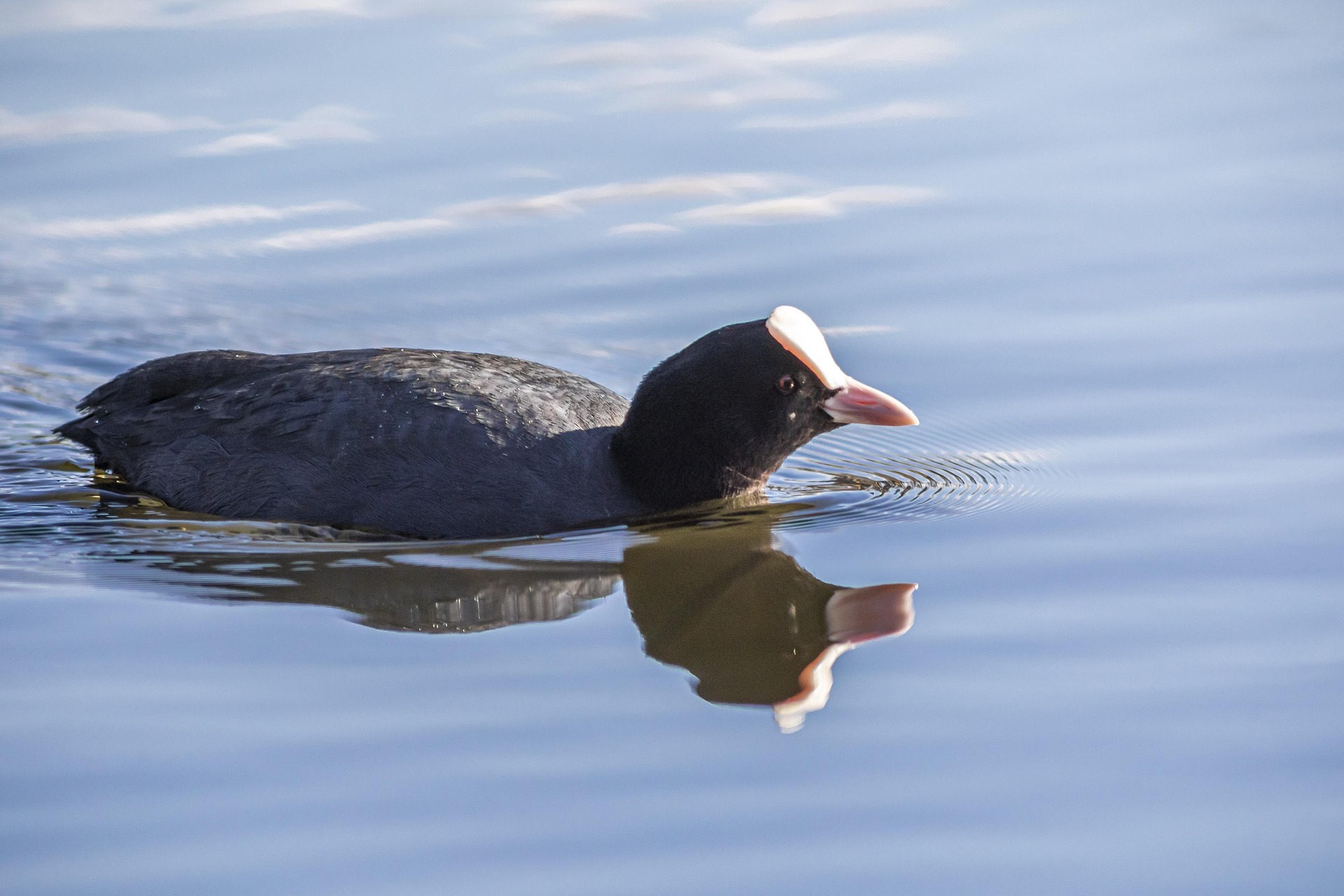Here’s a full overview of the Eurasian Coot (Fulica atra), a common yet fascinating waterbird found across Europe, Asia, and beyond:
Eurasian Coot (Fulica atra)
Taxonomy & Classification
- Kingdom: Animalia
- Phylum: Chordata
- Class: Aves
- Order: Gruiformes
- Family: Rallidae (Rails, crakes, and coots)
- Genus: Fulica
- Species: F. atra
- Common names: Eurasian Coot, Common Coot
General Description
- Size: 36–42 cm long; wingspan 70–80 cm.
- Weight: 600–1,000 g.
- Appearance:
- Plumage entirely blackish-grey, appearing sooty or charcoal-colored.
- Distinctive white facial shield and bill, giving rise to the phrase “as bald as a coot.”
- Red eyes and lobed (not webbed) toes for efficient swimming.
- Sexes: Similar in appearance; males slightly larger.
- Juveniles: Paler grey with duller bill and smaller facial shield.
Behavior & Lifestyle
- Activity: Diurnal and highly active; strong swimmers and divers.
- Flight: Strong but labored takeoff, requiring a long running start over water.
- Social behavior:
- Gregarious outside the breeding season—often in large flocks on lakes and reservoirs.
- Territorial during breeding; fierce fighters, using feet and wings to defend nests.
- Vocalizations: Loud, harsh “kow-kow” or “kew-kew” calls—often repeated during disputes or contact calls.
Diet
- Omnivorous:
- Plants: Aquatic vegetation, algae, reeds, pondweeds.
- Animals: Small invertebrates, mollusks, insect larvae, crustaceans, and occasionally small fish or amphibians.
- Feeding methods: Dives underwater or picks food from the surface and margins; sometimes steals food from ducks or other coots.
Breeding & Life Cycle
- Breeding season: April to August, depending on latitude.
- Nesting:
- Large floating platform built from reeds and vegetation, anchored among aquatic plants or near banks.
- Constructed by both sexes.
- Clutch size: 6–10 eggs.
- Incubation: 21–24 days by both parents.
- Chicks:
- Downy black with bright red-orange heads and blue bills at hatching.
- Fed by parents for about 4 weeks, then gradually become independent.
- Broods: Often 1–2 per season; replacement clutches possible if earlier ones fail.
Habitat
- Found in freshwater lakes, ponds, slow rivers, marshes, reservoirs, and estuaries.
- Prefers open water with emergent vegetation.
- In winter, can also occupy brackish or coastal waters.
Geographic Range
- Breeding range: Across Europe, North Africa, and most of temperate Asia east to Japan.
- Wintering range: Migratory in northern regions—moves south to North Africa, the Middle East, and South Asia.
- Introduced populations: Australia, New Zealand, and parts of Indonesia.
Ecological Role
- Herbivore and omnivore: Helps control aquatic plant growth.
- Prey species: Eggs and chicks eaten by large gulls, herons, raptors, and carnivorous mammals.
- Indicator: Healthy coot populations suggest productive wetland ecosystems.
Conservation Status
- IUCN Red List: Least Concern.
- Population trend: Stable or increasing in many areas; adapts well to human-modified habitats.
- Threats:
- Habitat degradation and wetland drainage.
- Pollution and eutrophication affecting aquatic vegetation.
- Disturbance during nesting.
- Conservation measures: Wetland protection and management ensure healthy populations.
Interesting Facts
- The white frontal shield is a display feature—larger and brighter in dominant individuals.
- Coots are highly aggressive toward intruders during the breeding season, often chasing or pecking rivals.
- They are capable of diving for up to 20 seconds in search of food.
- Juvenile mortality is high, often due to sibling competition and parental selection—adults may reduce broods if food is scarce.
- Despite their ungainly look on land, they are powerful swimmers and fliers.
Visited 9 times, 2 visit(s) today
Views: 138
Subscribe to the newsletter:
